 A septic system for your home is needed when you’re not on a city or municipal sewer system. This form of waste management is practical however does require attention and and understanding of how the septic system works and septic inspections are required to keep optimum performance and assure safety and health compliancy. Septic pumping is required periodically to keep your septic field functioning as designed, so keep this in mind when selecting a location for the septic tank installation. The home needs space around the unit for when it is time to get pumped out. But other than that, feel free to enjoy the modern convenience of a septic tank for your home. As a registered company with BCOSSA and ASTTBC Vortech aligns their service with professionals in the industry both for installations, maintenance and or septic inspections as well septic tank installation in Duncan, BC.
A septic system for your home is needed when you’re not on a city or municipal sewer system. This form of waste management is practical however does require attention and and understanding of how the septic system works and septic inspections are required to keep optimum performance and assure safety and health compliancy. Septic pumping is required periodically to keep your septic field functioning as designed, so keep this in mind when selecting a location for the septic tank installation. The home needs space around the unit for when it is time to get pumped out. But other than that, feel free to enjoy the modern convenience of a septic tank for your home. As a registered company with BCOSSA and ASTTBC Vortech aligns their service with professionals in the industry both for installations, maintenance and or septic inspections as well septic tank installation in Duncan, BC.
Common Reasons for Septic Tank Installation
– No city or municipal sewer system available – Independent waste management required for home – A component as required for your private sewage disposal system.
Having a reliable method of waste management goes a long way for homes outside of a sewer system’s reach. Septic tank installation and septic field installations take care of that. So have a Vortech technician guide you through the process and explain what your different options for installation or replacement are. For more information on a septic tank installation call Vortech
Learning About Septic Tanks
If you live outside of the city, you may rely upon a septic system to help you remove waste from your home. As such, you will have a septic tank buried in your yard in which the waste is stored. This way, it is kept safely away from your home where it cannot cause problems for you and your family. But, how exactly does a septic tank work and what do you need to know when selecting a septic tank for your home?
What is a Septic Tank?
A septic system is an independent sewage treatment centre that is not tied into the system used by private corporations or by the local government. The septic tank is an important component of this system, with other components including alarms, pumps, filters and other parts that may be required by the local government. Approximately 25% of the homes in North America use a septic system.
In order to perform its job, a septic tank must maintain an anaerobic bacterial environment. This environment develops as waste within the tank decomposes and mineralizes. In order to assist with this process, however, many homeowners choose to add supplemental bacterial agents to the tank. In addition, it is necessary to perform periodic maintenance on septic tanks in order to prevent clogging or other problems. For example, solids that cannot break down need to be removed. Otherwise, they will settle and fill the tank, leaving it in a less efficient state.
Do you require a septic inspection or just a routine check of your septic system? To get expert Duncan septic services call Vortech today. We offer dependable service and honest pricing. A damaged septic system can disrupt your entire household and result in potential health and environmental damages, so take the time to call today and learn more about your septic system and how to maintain it.
CONTACT US TODAY
How Do Septic Tanks Work?
Septic tanks usually hold anywhere from 600 to 1,500 gallons of waste. In order to function, they are connected to a wastewater pipe on one end and to a septic drain field on the other. The pipes are usually connected to a “distribution box” as this makes it possible for the liquid to move through the connecting pipes without causing problems with the surrounding land.
Many septic tanks contain two chambers, with one or two manhole covers. When wastewater enters one chamber, the solids fall to the bottom while the scum floats on the top. The solids are then an anaerobically digested. The liquid component, on the other hand, flows into the second chamber. The liquid that is left over after additional settling takes place is then released through a leach field. This waste is relatively clear when it re-enters the ground and is further filtered as it seeps through the ground.
The waste that does not break down needs to be removed from the septic tank. This is accomplished with a special truck that is called a “ pumper truck” This truck contains a hose that allows it to suck the waste from the septic tank and into the tank on the truck. These trucks then carry the waste away. The number of times a septic tank needs to be cleaned depends upon the size of the tank as well as the amount of solids in the tank and number of occupants in the home to name a few. The temperature of the tank is also a factor, as the anaerobic digestion process is more efficient in higher temperatures. On average most septic tanks should be pumped out every 3 years.
Do you require a septic inspection or just a routine check of your septic system? To get expert Duncan septic services call Vortech today. We offer dependable services and honest pricing. A damaged septic system can disrupt your entire household, and cost thousands in replacement costs and yard damage, so take the time to call today.
How Do I Choose a Septic Tank?
Most septic tanks range from holding anywhere from 1,000 to 1,500 gallons of waste and liquid. If you have a smaller home and only a couple people live in the home, a 1,000 gallon septic tank may be sufficient. On the other hand, if you have a larger home or if you have a family of four or more living in the home, it is probably a good idea to have a 1,500 gallon septic tank. In either scenario, having a larger septic tank is better because it will not need to be cleaned as often as allowing materials to separate and settle. When a new septic system is designed the septic tank is sized accordingly based on the number of bedrooms, retention, etc.
 Why is it important to keep a septic system in good working order?
Why is it important to keep a septic system in good working order?
A key reason to maintain your septic system is to save money! Failing septic systems are expensive to repair or replace, and poor maintenance is often the culprit. Having your septic system inspected (at least every 1- 2 years) is a bargain when you consider the cost of replacing the entire system. Your system will need pumping every 3 to 5 years, depending on how many people live in the house and the size of the system.
An unusable septic system or one in disrepair will lower your property’s value and could pose a legal liability. Other good reasons for safe treatment of sewage include preventing the spread of infection an disease and protecting water resources. Typical pollutants in household wastewater are nitrogen phosphorus, and disease-causing bacteria and viruses. Nitrogen and phosphorus are aquatic plant nutrients that can cause unsightly algae blooms.
Excessive nitrate-nitrogen in drinking water can cause pregnancy complications, as well as methemoglobinemia (also known as blue baby syndrome) in infancy. Pathogens can cause communicable diseases through direct or indirect body contact or ingestion of contaminated water or shellfish. If a septic system is working properly, it will effectively remove most of these pollutants.
Do you require a septic inspection or just a routine check of your septic system? To get expert Duncan septic services call Charles today. We offer dependable service and honest pricing. A damaged septic system n can disrupt your entire household, so take the time to call today.
How will I know if there is a problem with my septic system?
If your septic system is not functioning properly, you may notice the following signs:
– Septic Inspection will show an issue
– Large amounts of algae growth occur in or around nearby lakes or water bodies.
– Sinks, showers and toilets back up with sewage or drain slowly.
– The lawn over the septic field has patches of abnormally healthy-looking grass.
– There are soggy areas, areas with surfacing grey water, or areas with surfacing sewage on or near the septic field.
– The lawn above the septic field is wet.
– There is a sewage odour in your home or over the area of your septic field.
– Nearby well water tests indicate high levels of nitrates, bacteria, or other contaminants.
– Dosing pumps, if your system has them, run constantly or not at all.
These are to name a few of the observations you may notice with a failing or compromised septic system. If you look after your septic system and understand the “do’s” and “dont’s” you can enjoy the benefits of living in rural areas and having a trouble free system for many years, however like all things, septic systems require maintenance and servicing for both pressured systems as well gravity or seepage bed style systems. Call Vortech if you have any septic questions or concerns or would like to book your septic inspection.
CONTACT US TODAY
Here is some information courtesy of the Ministry of Health about the Risks & Impacts and Best Management Practices:
Risks and Impacts
Poorly maintained septic systems are more likely to fail than systems which are inspected regularly and pumped out as required. Sludge and scum can plug the tile field causing system failure, which typically results in ponding of effluent above the field. Failing septic systems are expensive to repair or replace and poor maintenance is a common cause of early system failures. The cost of maintenance is very little in comparison to repair or replacement. For example, replacing a system can cost as much as $15,000 or more while inspections can cost as little as $75 and pump-outs as low as $200 (NSFC, 1995a).
When septic systems fail, inadequately treated household wastewater is released into the environment. Any contact with untreated human waste can pose significant health risks and untreated wastewater from failing septic systems can contaminate nearby wells, ground water and drinking water sources (NSFC, 1995a).
Chemicals disposed of in a septic system can also pollute local water sources and contribute to system failures. It is important for homeowners to educate themselves on what should and should not be disposed of through a septic system (NSFC, 1995a). Septic tank additives or “starters” should never be used; they are unnecessary, expensive and may cause pollution.
Improperly maintained septic systems can impact the economic health of the community. Failed septic systems can reduce property values and contribute to the pollution of local waterbodies used for commercial and recreational activities (NSFC, 1995a).
 The following signs can be an indication of a failing system:
The following signs can be an indication of a failing system:
– slowly draining sinks and toilets;
– gurgling sounds in the plumbing;
– plumbing backups;
– sewage odours in the house or yard;
– wet or mushy ground in the disposal field;
– grass growing faster or greener in one particular area of the yard; and
– tests showing the presence of bacteria in nearby wells.
None of these warning signs can be considered a sure indication that a system has failed, but the appearance of one or more should prompt homeowners to have their system inspected. Septic system failures can also occur without any of these warning signs. For this reason, a yearly inspection of systems is recommended (NSFC, 1995a).
Best Management Practices
The following BMPs are designed for homeowners and will help ensure that their systems function properly and maximize the lifetime of the system:
Make sure that your system meets legal requirements before installing, repairing or upgrading an onsite sewage system. In BC, the Ministry of Health Planning is responsible for septic systems and installation is permitted under the Sewage Disposal Regulation of the Health Act. Contact your local public health authority for permits for repairs, improvements, installations and further information.
Sketch a map of your septic system showing the location of all components and keep it with your maintenance and repair records. This will make maintenance easier and be useful to future owners.
Keep your septic tank cover accessible for inspections and pumpings. Install risers if necessary.
Have your system inspected annually to ensure that it is working properly and to determine when it should be pumped out. By inspecting and pumping your system regularly you can prevent high repair or replacement costs. A professional can do a thorough inspection of the entire system including the disposal field and individual components of the system.
Pump out the tank regularly to prevent accumulating solids and clogging the disposal field. The frequency of pump outs will depend on the size of your system, the number of people in the house and the habits of those individuals. A general rule is once every three to five years.
Upgrade your system when you upgrade your home (i.e. when you add a bedroom or suite).
Practice water conservation. Continual saturation of the disposal field can affect the quality of the soil and its ability to naturally remove contaminants. The following points will help you to use water wisely: repair any leaking faucets or running toilets; use dishwashers and washing machines only when full; avoid letting the water run when washing or brushing your teeth; avoid taking long showers and install water-saving features in faucets and shower heads; install low-flush toilets or put a toilet dam (e.g., brick) in the tank to reduce the capacity of the tank; space out activities requiring heavy water use, like laundry, over several days;
Divert roof drains, surface water and sump pumps away from the disposal field. Don’t saturate your disposal field with automatic sprinklers.
Avoid using garburators — this will reduce the amount of solids and grease you put into the system.
Don’t use toilets as trash cans — excess solids can clog your drain field which will cost you money for more frequent pumping.
Don’t put toxic chemicals (paints, varnishes, thinners, waste oils, photographic solutions, or pesticides) down the drain because they can kill the bacteria at work in your system and can contaminate water bodies.
Use biodegradable household cleaners instead of bleach or other hazardous products (which will kill the good bacteria in your system).
Do not use toilet cleaners that are placed in the tank.
Avoid flushing pet wastes into the system — bury them away from the drain field instead.
Don’t drive, pave or put heavy objects or machinery over the septic system and disposal field. Don’t cover the disposal field with a hard surface such as concrete or asphalt since evaporation will be prevented. This area should only have a grass cover which will prevent erosion and help remove excess water.
Don’t plant trees or shrubs near the drain field because their roots can damage or plug the pipes. Plant grass instead.
Don’t use septic tank ‘starters’, additives or similar products. These products usually do not help and can sometimes harm your system. Allow bacteria to act on their own.
Use low-phosphate or phosphate free detergents.
Don’t go down into a septic tank. Toxic gases are produced by the natural treatment processes in septic tanks and can kill in minutes. Extreme care should be taken when inspecting a septic tank, even when just looking in.
CONTACT US TODAY


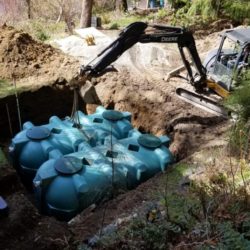
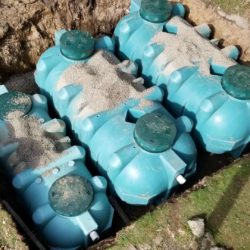

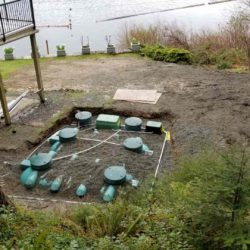
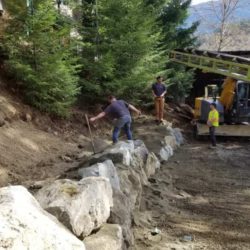
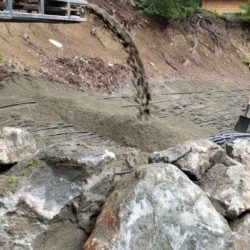
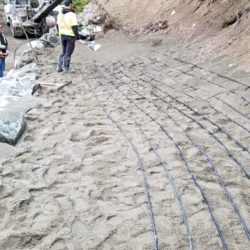
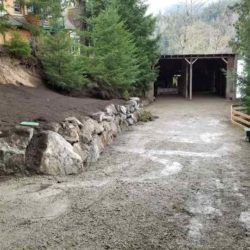



 A septic system for your home is needed when you’re not on a city or municipal sewer system. This form of waste management is practical however does require attention and and understanding of how the septic system works and septic inspections are required to keep optimum performance and assure safety and health compliancy.
A septic system for your home is needed when you’re not on a city or municipal sewer system. This form of waste management is practical however does require attention and and understanding of how the septic system works and septic inspections are required to keep optimum performance and assure safety and health compliancy.  Why is it important to keep a septic system in good working order?
Why is it important to keep a septic system in good working order? The following signs can be an indication of a failing system:
The following signs can be an indication of a failing system: